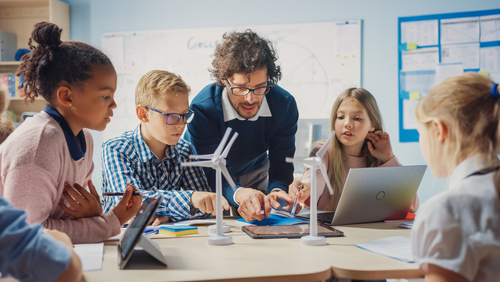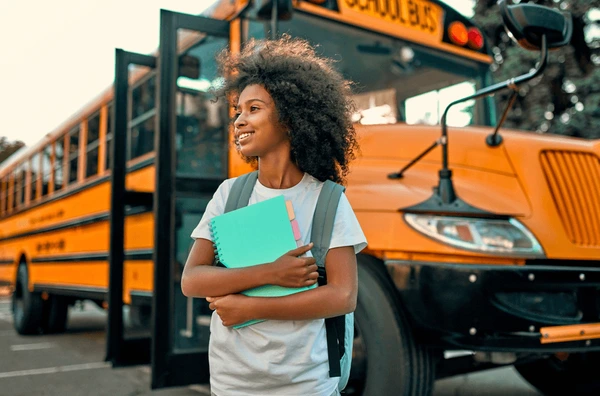In today’s fast-paced, technology-driven world, traditional teaching methods are no longer enough to keep students engaged and motivated. Classroom innovation involves creative teaching strategies, interactive learning techniques, and technology integration to make education more dynamic, inclusive, and effective.
This guide explores innovative strategies that educators can use to engage students, foster critical thinking, and create a student-centered learning environment.
The Importance of Classroom Innovation
A. Why Innovation Matters in Teaching
- Increases student engagement – Makes lessons interactive and fun.
- Encourages active learning – Moves beyond passive memorization.
- Supports diverse learning styles – Caters to visual, auditory, and kinesthetic learners.
- Prepares students for the future – Develops critical thinking, creativity, and problem-solving skills.
B. Traditional vs. Innovative Teaching Approaches
| Aspect | Traditional Teaching | Innovative Teaching |
|---|---|---|
| Learning Style | Lecture-based | Interactive & student-centered |
| Technology Use | Limited | Integrated (AI, VR, gamification) |
| Engagement | Passive | Active, hands-on |
| Student Role | Listeners | Collaborators & creators |
| Assessment | Standardized tests | Project-based & real-world applications |
Creative Strategies for Engaging Students
A. Project-Based Learning (PBL)
What It Is: Students work on real-world projects to develop problem-solving and collaboration skills.
How to Implement:
- Assign community-based projects (e.g., sustainability initiatives).
- Use STEM challenges (e.g., building robots, designing apps).
- Encourage student-led research projects.
Benefits:
- Boosts critical thinking and creativity.
- Encourages teamwork and leadership.
- Makes learning more relevant and meaningful.
B. Gamification: Turning Learning into a Game
What It Is: Using game elements (points, rewards, leaderboards) to increase engagement.
How to Implement:
- Use Kahoot! or Quizizz for interactive quizzes.
- Create classroom escape rooms with puzzles related to the lesson.
- Design badges and achievements for progress tracking
Benefits:
- Makes learning fun and interactive.
- Encourages healthy competition.
- Improves knowledge retention.
C. Flipped Classroom Model
What It Is: Students learn content at home (videos, readings) and apply it in class through discussions and hands-on activities.
How to Implement:
- Assign educational YouTube videos or TED Talks before class.
- Use Google Classroom or Edmodo to share resources.
- Conduct group problem-solving activities in class.
Benefits:
- Encourages self-paced learning.
- Shifts focus to application and critical thinking.
- Maximizes teacher-student interaction.
D. Technology-Enhanced Learning
What It Is: Integrating digital tools and apps to enhance engagement.
How to Implement:
- Use VR field trips (Google Expeditions).
- Implement AI tutors (Socratic, Quizlet AI).
- Encourage digital storytelling (Canva, Storybird).
Benefits:
- Improves tech literacy.
- Enhances visual and experiential learning.
- Makes lessons more immersive and interactive.
E. Collaborative Learning & Peer Teaching
What It Is: Students work together and teach each other.
How to Implement:
- Use Think-Pair-Share activities.
- Assign peer teaching roles.
- Implement group research and presentations.
Benefits:
- Develops communication and teamwork skills.
- Reinforces understanding through peer discussion.
- Encourages active participation.
F. Inquiry-Based Learning
What It Is: Encouraging students to ask questions, research, and explore topics independently.
How to Implement:
- Start with open-ended questions.
- Encourage experiments and case studies.
- Use real-world problem-solving challenges.
Benefits:
- Develops curiosity and self-motivation.
- Fosters independent thinking.
- Encourages deep learning beyond memorization.
Creating a Student-Centered Learning Environment
A. Personalizing Learning for Different Students
- Use AI-driven learning platforms (adaptive lessons).
- Allow student choice in projects and topics.
- Incorporate multi-modal learning (visual, auditory, hands-on).
B. Encouraging Growth Mindset
- Praise effort over ability (“You’re improving!”).
- Teach resilience and problem-solving.
- Use reflective learning journals.
C. Making Learning Inclusive and Accessible
- Use assistive technology (text-to-speech tools).
- Incorporate diverse cultural perspectives.
- Provide alternative assessment methods.
Measuring the Impact of Classroom Innovation
A. Assessment Beyond Traditional Tests
- Project-based assessments – Evaluate creativity and application.
- Student portfolios – Showcase progress over time.
- Real-world simulations – Business, engineering, or medical scenarios.
B. Collecting Feedback for Continuous Improvement
- Use student surveys on engagement.
- Implement exit tickets (1-minute reflections).
- Hold class discussions on learning preferences.
The Future of Classroom Innovation
A. Emerging Trends
- AI-powered personalized learning.
- Virtual and augmented reality in education.
- Microlearning (short, engaging lessons).
B. Challenges and Considerations
- Digital divide – Not all students have equal tech access.
- Teacher training – Educators need support to integrate new methods.
- Balancing innovation with curriculum requirements.
Conclusion: Transforming Education Through Innovation
Classroom innovation is the key to engaging students, enhancing learning, and preparing them for the future. By embracing project-based learning, gamification, technology, and collaborative methods, educators can create dynamic, student-centered classrooms that inspire curiosity and lifelong learning.
As education evolves, innovation will remain at the heart of effective teaching, ensuring that students are not just passive learners but active participants in their own education. 🚀📚✨


